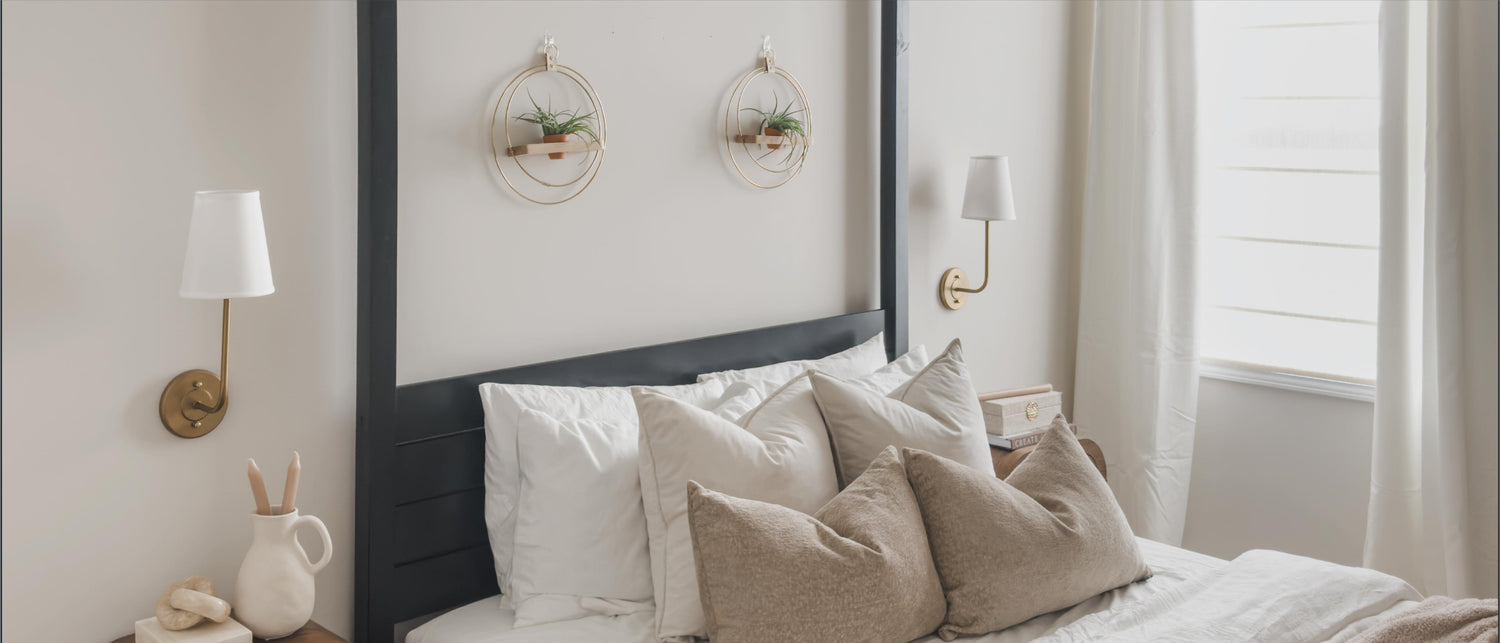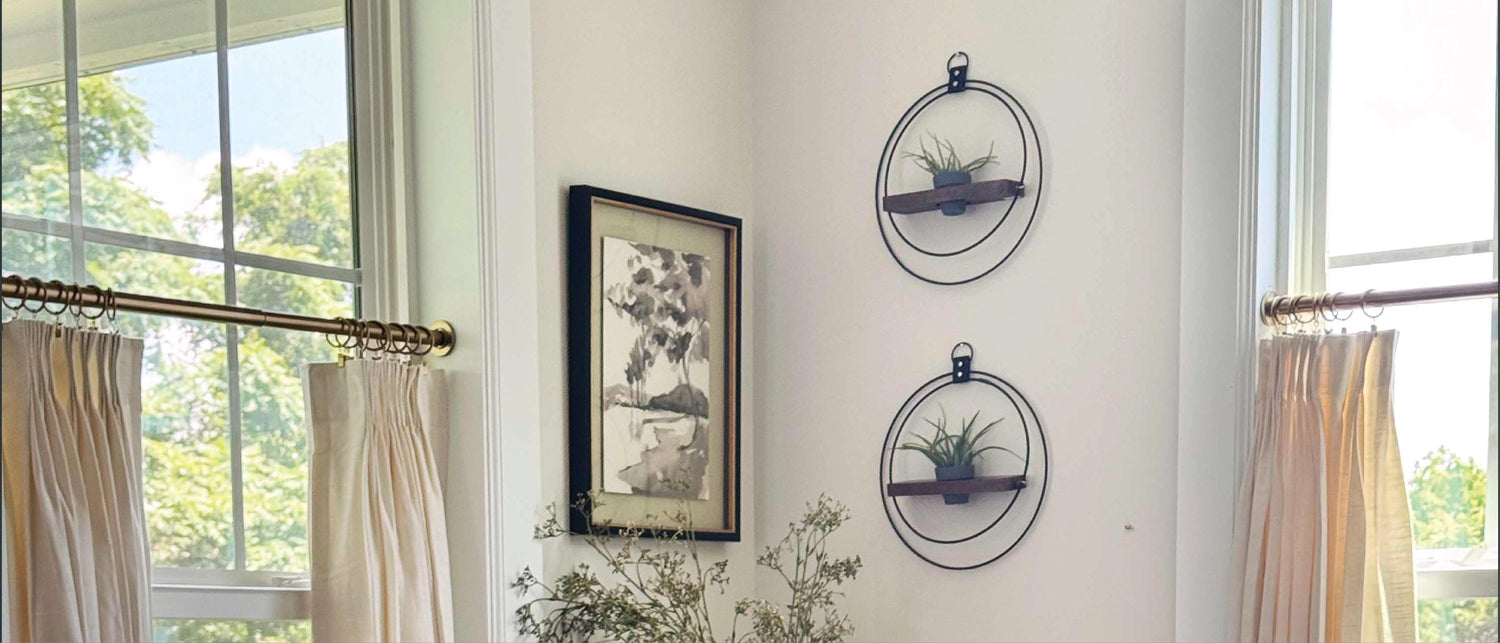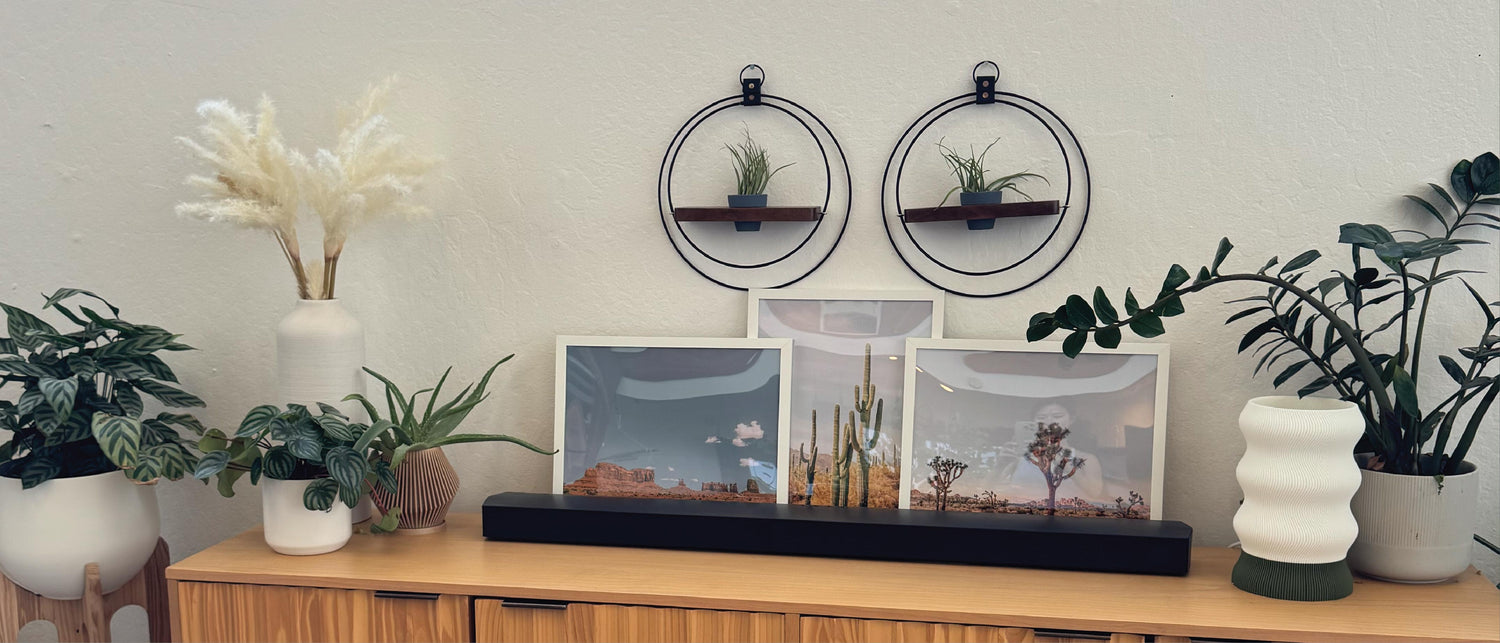Everyone knows how human touch can not only be heartwarming and but also has soothing qualities known to reduce stress. But what about when it comes to houseplants in particular.
Does a gentle touch from a fellow house-living potted flora bring positive vibes to your houseplant’s world? Or can it have other effects which may even stop it from growing?

In our helpful article, we will help those wondering, ‘should my houseplants touch each other?’ and give you the definitive answer! Let’s start with a quick summary...
"Generally, houseplants should not touch each other. Science has discovered they can feel touch, so if touched by another plant it can cause a genetic defense response that reduces growth."
Alongside this, houseplants that touch could become more easily infested with pests.
So the short answer is no, houseplants should not touch each other. Now let’s discover more about why your houseplants prefer a solo existence or if there are rare occasions when grouping them together is better for their well-being.
In effort to understand a little better whether houseplants should touch each other, let's begin by exploring whether plants can feel being touched.
Can Houseplants Feel Touch?
We all have heard about the positive benefits of talking to plants but what about actual touch?
It’s surprising not only to us but also to scientists studying houseplants to discover they can actually feel touch.
A plant will respond fairly rapidly to physical contact with:
- Leaves
- Water
- Humans
- Other plants
According to experts such as those from La Trobe University who published their findings in The Plant Journal discovered that touch had a significant response in plants of all kinds, from houseplants to ones grown outdoors.
However at this time research still isn’t clear as to why houseplants and others respond in such a manner.
Touch Triggers A Genetic Defense Response In Houseplants
According to Professor Jim Whelan, the research lead of the above study, even a small touch to a houseplant could activate a response in terms of a genetic defense.
In a nutshell, this means that any touch to a plant, whether a houseplant or any kind of outdoor plant will trigger stress and cause it to defend itself genetically.
The important takeaway here is also that if a houseplant feels touch repeatedly, it can significantly stunt its growth.
Professor Jim Whelan, who led the research, said that even the slightest touch activates a major genetic defense response which, if repeated, slows down plant growth.
This is what professor Whelan says on the subject of touch.
"The lightest touch from a human, animal, insect, or even plants touching each other, triggers a huge gene response in the plant,"
"Within 30 minutes of being touched, 10 percent of the plant's genome is altered.
"This involves a huge expenditure of energy which is taken away from plant growth. If the touching is repeated, then plant growth is reduced by up to 30 percent."
It’s important to understand that touch from humans, other animals, insects, and even a touch from a fellow houseplant stimulate the genetic response which will slow down their growth.
Touch, Slow Growth & Light
Although it can appear negative for a houseplant to have stunted growth, if houseplants are grouped together with their leaves touching, it’s one way of ensuring they all get equal amounts of light.

Touch Means Houseplants Will Grow Less
We know that if houseplants are touching each other a genetic response will trigger in the houseplant to slow its growth. Having a grouping of houseplants close together can sometimes be troublesome because the plants are all competing for one vital nutrient, light.
When houseplants touch this will effectively prevent them from growing into a space already occupied by another plant and will allow all plants within the grouping to have enough nutrients and light.
Thankfully, this is where Braid & Wood Plant Hangers can benefit your plants. Partly because plant hangers and shelves provide an opportunity for your plants to be kept higher up – on walls for example.
And in fact, this also offers the added benefit of keeping them out of reach of children and pets.
"A Braid & Wood Plant Hanger allows a single plant to grow unhindered by other plants around it."
What Do Plants Do When Touched?
In most plants, there won’t be any visible evidence but some plants, such as the Mimosa Pudica will visibly fold up, shrinking away from anything that brushes or touches its leaves.
So much so, this plant is often referred to as the Touch-Me-Not Plant or the Shame Plant.
These plants are well known for disliking their leaves being handled, or touched by other plants and will shrink away from any kind of physical contact.
This physical response is thought to discourage any insects likely to harm it or dislodge pests already in its leaves.
The word for this response phenomenon is “thigmomorphogenesis”.
Plants That Touch Invoke Molecular And Biochemical Changes
Other house plants may not have such a clear response, but they certainly react to the sensation of something such as a human, animal, insect, or another plant that touches their leaves.
It’s clear they will display 'invisible' responses to mechanical stress which includes being touched by fellow green housemates, including changes at their molecular and biochemical levels.
So along with the fact that any houseplants whose leaves touch may not grow as much as they should, are there any more reasons why you should think carefully if houseplants should touch?
Houseplants That Touch Are Easier To Infest
The closer your plants are, the easiest they are to infest.
Pests such as thrips and spider mites, have a much easier time moving around your houseplants if they are actively touching each other.
House plant pests typically don’t like to travel very far, so by making sure your plants don’t touch, it’s easier to isolate an infected plant.
Pests such as thrips and spider mites, have a much easier time moving around your houseplants, if they are actively touching each other.
Should I Group My Houseplants Together?
Although we’ve discovered houseplants grow better and are less easy to become infected if they don’t touch, it’s worth knowing that grouping them together can be beneficial.
Plants that grow in the wild do this for a number of reasons.
For instance, houseplants that like moisture will create their own mini-biome. This is because houseplants that like humidity will create their own pocket of moisture.
So if you want to keep your plants apart, then what ways can you adopt in order to keep your house plants from touching each other? Let’s look at that next...
How To Arrange Your Plants So That They Don’t Touch Each Other
Varying Plant Heights Prevent Touching

A pretty bookshelf will do the trick. Put one plant on each part of the bookshelf in order to make sure they do not touch. You can also install floating shelves on your walls at different heights to keep plants a safe distance from one another.
Use Furniture To Separate Plants
Spread plants evenly around the room, and between available furniture. This means you can provide interesting plants between vacant gaps in your furniture and also allow them their own space.
Prune Plants To Keep Them Apart
Plants grow, of course! So if they are getting larger, or for already existing larger plants, consider trimming them back to free up space. It can also enable them to become more healthy too.
Train Plants To Climb Or Spread In A Certain Direction

Moss poles, rails, and indoor trellis can work wonders, not only as decor but to help train plants to climb. Or simply drape them along – or off the side of the furniture to keep them separated. Radiator shelves are perfect for this.
Go Minimalist To Keep Plants Apart

Sometimes less is more. Consider just getting a few elegant plant holders around the room. This enables you to have a greater focus on some really pretty plant holders and plants, rather than just lots of plants.
And Finally…
So I hope we've given you lots of important information on your houseplants and how they react if they touch each other. Who knew?
To elevate your green space in both your home and workspace don’t forget to check our range of minimalist and modern indoor plant hangers for the houseplant lover!
At Braid & Wood all of our products are made from high quality hardwoods like maple, white oak and walnut.







1 comment
Insightful article! This brings up a question for me, though, with all the response that touch can trigger: what do I do about cleaning plant leaves of dust? Is it better to leave them alone or clean them off?